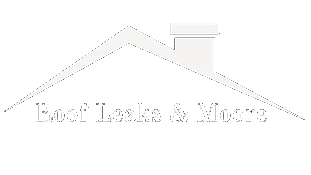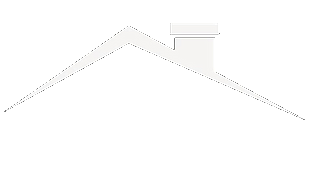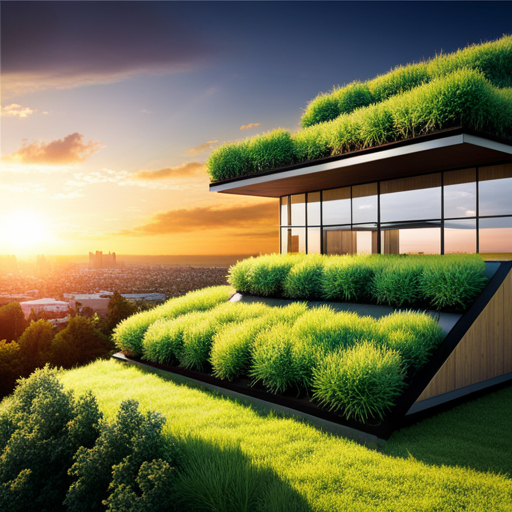If you’re looking to make your building more environmentally friendly, you might want to consider installing a green roof. Not only do green roofs provide a beautiful and functional addition to your building, but they also offer numerous environmental benefits.
In this article, we’ll explore the environmental regulations and financial incentives for green roofs, as well as case studies of successful implementation and the future of green roofs.
First, let’s define what a green roof is. A green roof is a roofing system that incorporates vegetation, soil, and a waterproofing membrane to create a living roof. Green roofs can be installed on various types of buildings, including residential, commercial, and industrial. They can provide numerous benefits, such as reducing stormwater runoff, improving air quality, and providing additional insulation for your building.
However, installing a green roof involves more than just planting some vegetation on your roof. There are environmental regulations to consider, as well as financial incentives that can make the investment more feasible.
What are Green Roofs?
You may not realize it, but green roofs are a fantastic way to incorporate sustainability into your building design and reduce your environmental impact. Green roofs are essentially roofs that are covered with vegetation, soil, and other materials that promote plant growth.
There are two main types of green roofs: intensive and extensive. Intensive green roofs are thicker and require more maintenance, while extensive green roofs are thinner and require less maintenance. Both types of green roofs offer a variety of benefits, such as reducing stormwater runoff, improving air quality, and increasing energy efficiency.
In addition to these benefits, green roofs also have a positive impact on biodiversity by providing habitats for birds, insects, and other wildlife. They also help to mitigate the urban heat island effect by absorbing solar radiation and reducing the amount of heat that is reflected back into the environment.
Overall, green roofs are a great way to promote sustainability and reduce your environmental impact. Now, let’s discuss the environmental regulations for green roofs and how they can further incentivize the implementation of these eco-friendly building designs.
Environmental Regulations for Green Roofs
When it comes to implementing rules for the installation of green roofs, it’s important to consider the policy implications and industry standards.
Environmental regulations for green roofs vary depending on the location, but they generally aim to promote the use of green roofs as a way to mitigate the negative impacts of urbanization on the environment.
For example, some cities require the installation of green roofs on new buildings or offer incentives for property owners who install them.
In addition to promoting the use of green roofs, environmental regulations also ensure that these structures are installed and maintained in a way that is safe for the environment and the people who use them.
This includes guidelines for the type of plants that can be used, the materials used in the construction, and the maintenance practices required.
By following these regulations, green roofs can continue to be a sustainable solution for urban areas.
Speaking of sustainability, financial incentives for green roofs are also available in many areas.
Financial Incentives for Green Roofs
Many cities and states across the US offer financial incentives to encourage the adoption of green roofs, such as tax credits, grants, and rebates. Tax credits are a common incentive that can help offset the cost of installing a green roof. In some cases, these credits can cover up to 50% of the total cost of the project.
Grant programs are another popular option, providing financial assistance to organizations, businesses, and individuals looking to install green roofs. These grants can cover a wide range of costs, including design and installation fees, materials, and maintenance.
In addition to tax credits and grant programs, many cities and states also offer rebates to incentivize green roof adoption. These rebates can range from a few hundred dollars to several thousand and are typically based on the size of the green roof installation.
Some cities also offer stormwater fee reductions for buildings with green roofs, as these roofs can help reduce the amount of stormwater runoff and alleviate pressure on local stormwater infrastructure.
With these financial incentives available, more and more businesses and individuals are choosing to install green roofs and reap the benefits they offer.
Transitioning into the subsequent section about "case studies of successful green roof implementation,"it’s important to note that financial incentives are not the only factor contributing to the success of green roofs. Case studies have shown that the design and maintenance of the roof, as well as the ecosystem services it provides, are also crucial components to consider when implementing a green roof project.
Case Studies of Successful Green Roof Implementation
Imagine walking through a bustling city and stumbling upon a beautiful rooftop oasis, filled with lush plants and buzzing with pollinators – this is the reality of successful green roof implementation.
Many cities have already embraced green roofs as an effective way to combat the negative effects of urbanization on the environment. One such example is the city of Chicago, which has implemented one of the most successful green roof programs in the world. Chicago’s program provides financial incentives to building owners who install green roofs, which has led to the installation of over 500 green roofs in the city.
The cost-benefit analysis of green roofs is also a major factor in their success. Green roofs provide a host of benefits, including stormwater management, energy savings, and improved air quality. These benefits can outweigh the initial cost of installation in the long run.
In addition, public perception of green roofs has also improved over time, as more people become aware of their benefits. Successful implementation of green roofs can lead to a more sustainable and livable city, benefiting both the environment and its inhabitants.
As green roofs continue to gain popularity, it’s important to consider their future potential. What other benefits can be gained from green roofs? How can they be improved to become even more effective?
These are questions that will be explored in the next section about the future of green roofs.
Future of Green Roofs
As we look ahead to the future of urban landscapes, it’s clear that green roofs will play a vital role in creating more livable and resilient cities. Green roofs have become an increasingly popular solution to the environmental challenges facing urban areas, and with continued advancements in technology, their potential for impact is only growing.
The future of green roofs holds exciting possibilities for urban planning and sustainability. Here are a few key developments to watch for:
-
Improved technology: As research continues, we can expect to see even more efficient and effective green roof systems. Advances in irrigation, soil composition, and plant selection will help green roofs thrive in diverse climates and contribute to urban biodiversity.
-
Integration with urban planning: As cities increasingly prioritize sustainability, green roofs will become a more integrated part of urban planning. This could include incentives for green roof installations, as well as zoning regulations that require a certain percentage of new buildings to have green roofs.
-
New applications: Green roofs are already being used for everything from urban agriculture to stormwater management. In the future, we may see even more innovative uses, such as green roofs that generate energy or serve as public recreation spaces.
Overall, the future of green roofs is bright, and as they become more widespread, they’ll play a critical role in creating healthier, more sustainable cities.



